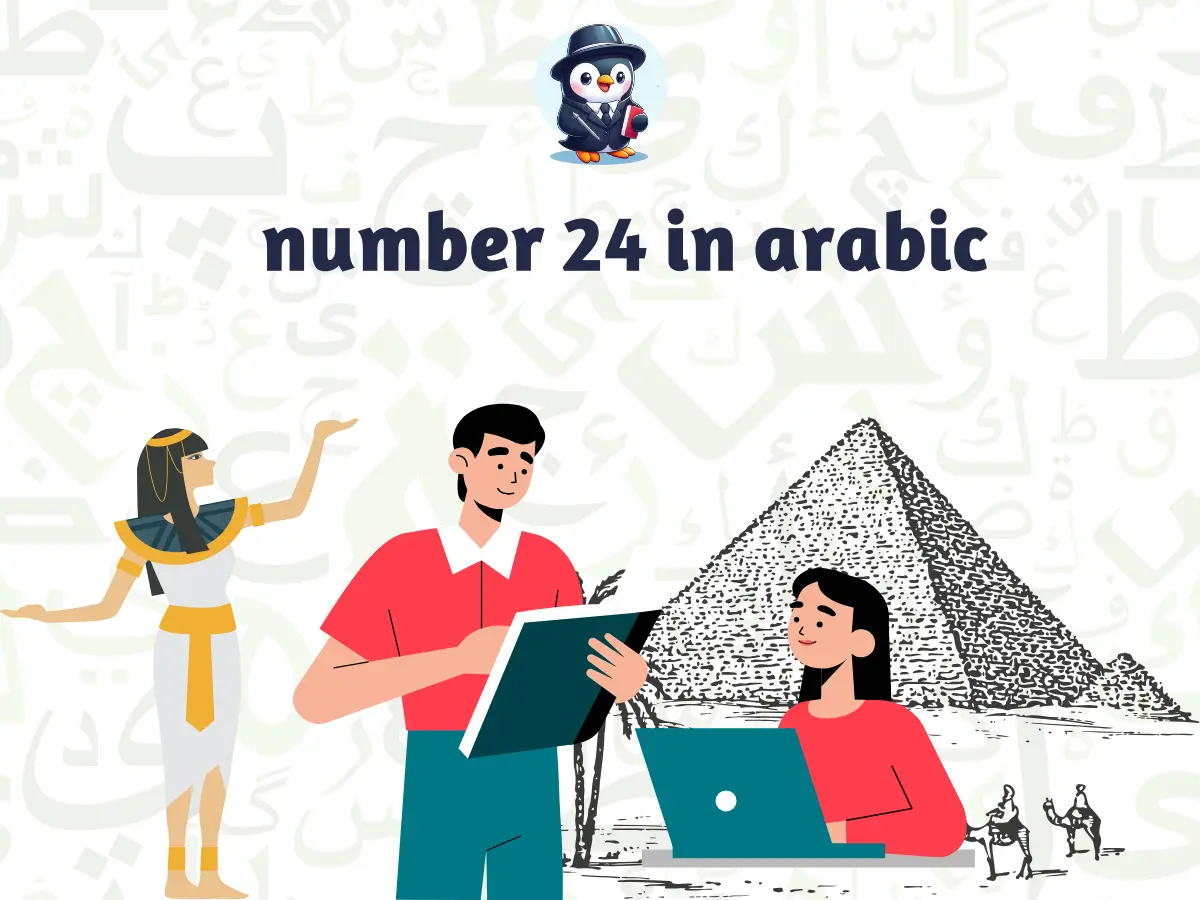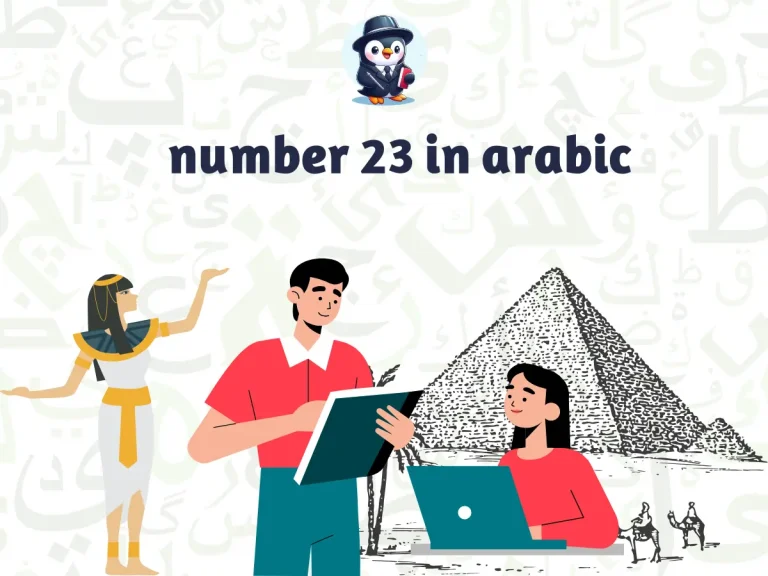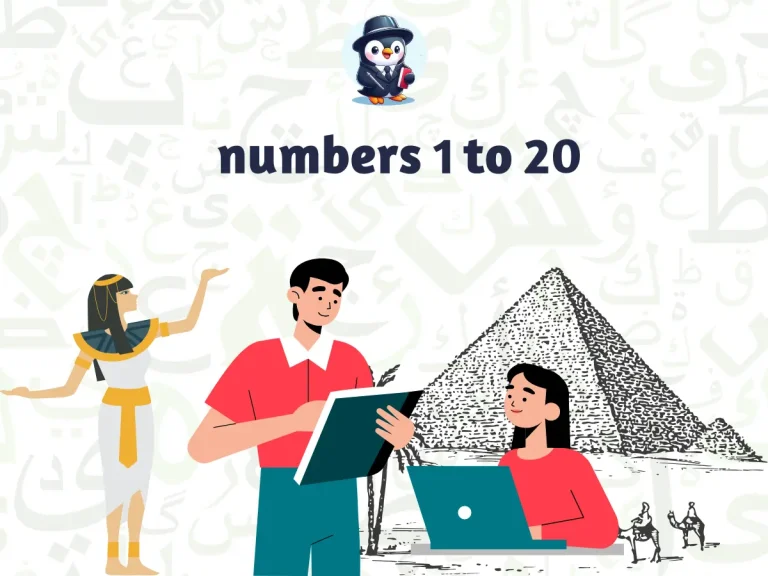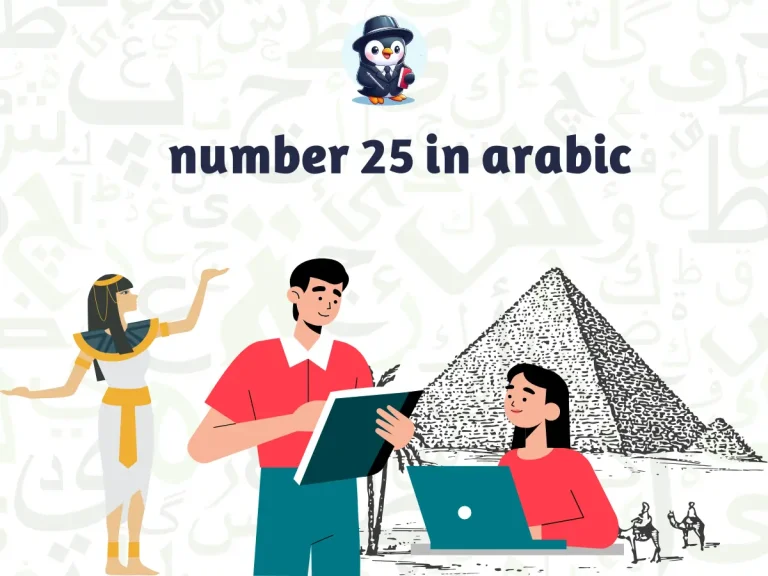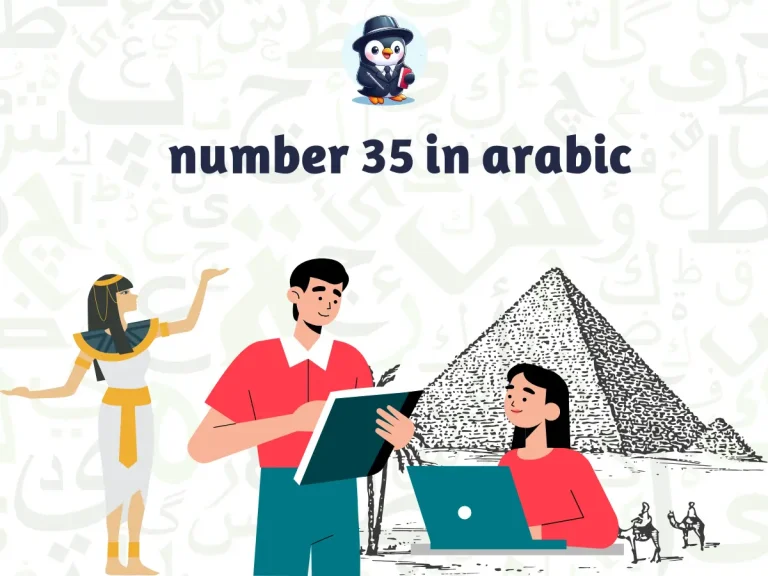number 24 in arabic pronunciation & writing
The number 24 in arabic, “Arba’ wa-‘Ishrūn” (أربعة وعشرون) in Arabic, represents more than just a numerical value.
It signifies a crucial threshold in Arabic counting, unlocking a world of larger quantities and cultural significance.
To learn more about the rest of the numbers from 1 to 100, you can visit this link: Arabic numbers 1 to 100
Here’s an exploration of the importance and diverse uses of twenty-four in the Arabic world:
number 24 in arabic: Essential for Everyday Transactions
Basic Arabic uses numerals for simple transactions. However, navigating larger purchases or complex negotiations often relies on spoken numbers.
Mastering “Arba’ wa-‘Ishrūn” empowers you to confidently discuss prices, distances, and quantities exceeding the base-ten system.
- Imagine bargaining at a market (“yaktlif bi-arba’ wa-‘ishrīna dirhaman” – he offers it for twenty-four dirhams)
- or discussing travel plans (“المسافة إلى المدينة أربعة وعشرون كيلومترا” – the distance to the city is twenty-four kilometers).
number 24 in arabic: Unlocking Dates and History
Dates on historical buildings and documents are frequently written in numerals. Knowing how to read “Arba’ wa-‘Ishrūn” allows you to decipher these historical references.
- An inscription mentioning ” (توفي العالم الجليل في الرابع والعشرين من نوفمبر) (tawafā al-ʿālim al-jalil fi al-rābiʿ wa-‘ishrīna min november) translates to “the great scholar passed away on the twenty-fourth of November,” offering a window into the past.
Understanding Prices and Quantities: “Arba’ wa-‘Ishrūn” plays a crucial role in comprehending larger monetary values and quantities of items.
Whether discussing grocery bills or bulk material purchases, it becomes a building block for expressing larger numbers.
- For example, “baa’at khams wa-arbaʿ wa-‘ishrīna kilugramman min al-arz” (باع خمسة وأربعة وعشرون كيلوغراما من الأرز) translates to “he sold five and twenty-four kilograms of rice.”
number 24 in arabic: Cultural Significance (Optional Use)
Numbers can hold symbolic meaning in Arabic culture. While the evidence for twenty-four having a prevalent symbolic association is limited, it could appear in folktales or proverbs, conveying specific ideas.
Understanding such references enriches your cultural appreciation.
By appreciating the multifaceted nature of “Arba’ wa-‘Ishrūn,” you gain a deeper understanding of Arabic communication and develop a foundation for navigating larger quantities, historical references, and even cultural nuances.
Twenty-four serves as a gateway, propelling you towards a richer appreciation of the Arabic language and its connection to the social and historical context it serves.
Unveiling Twenty-Four: A Stepping Stone Across Languages and Civilizations
The number twenty-four, “Arba’ wa-‘Ishrūn” (أربعة وعشرون) in Arabic, occupies a unique space.
It transcends its numerical value, serving as a cornerstone in Arabic communication while potentially holding significance in some ancient cultures. Let’s delve into its multifaceted nature:
Overview and Distinction in Arabic: number 24 in arabic
Building on the Base: Unlike smaller numbers, twenty-four necessitates a combination: “Arba'” (four) and “‘Ishrun” (twenty).
This signifies a move beyond relying solely on base-ten and opens the door for expressing larger quantities efficiently.
Importance for Communication: Mastering “Arba’ wa-‘Ishrūn” allows you to navigate situations involving larger numbers in Arabic with confidence.
It’s crucial for understanding prices, distances, historical references, and forming more complex numbers.
The number 24 in arabic in Ancient Cultures
Potential Links Across Civilizations: While definitive proof for a widespread symbolic association with twenty-four is lacking,
its presence in some cultures suggests potential meaning. Here are some possibilities:
Divisions of Time and Space: Some cultures, like the ancient Egyptians, divided the day into 24 hours.
The Babylonians might have used a base-24 system for some astronomical calculations.
These connections suggest the potential for twenty-four to represent completeness or a full cycle.
Mythological References: The number 24 appears in some mythologies. In Greek mythology, for example, Homer’s Iliad mentions 24 elders guarding Troy.
These references might hold symbolic meaning within their specific cultural contexts.
Distinction from Emphasis on Smaller Numbers: Many ancient cultures, including some in the Middle East, placed emphasis on smaller numbers like seven or ten.
This might explain why symbolic associations with twenty-four, which falls outside these common divisions, are less prevalent.
Understanding the distinction of twenty-four in Arabic and its potential connections to ancient cultures allows for a more nuanced appreciation of its role in human history and communication.
Writing and Pronouncing number 24 in arabic
The number twenty-four, “Arba’ wa-‘Ishrūn” (أربعة وعشرون) in Arabic, represents a significant step beyond basic counting.
Here’s a comprehensive guide on how to confidently write and pronounce this essential number, propelling you towards a richer understanding of Arabic communication:
Writing with Accuracy: number 24 in arabic
Focus on the Individual Components: “Arba’ wa-‘Ishrūn” is written by combining two separate words:
| Pronunciation | Arabic | English |
|---|---|---|
| Arba’ wa-‘Ishrūn | أربعة وعشرون | twenty-four |
| uḥtāji ilā shiraa’ arbaʿah wa-‘ishrīna metron min al-qamash | أحتاج إلى شراء أربعة وعشرين مترا من القماش | I need to buy twenty-four meters of fabric. |
- Arba’ (أربعة): This translates to “four” and is written with the letters alif (ا), raa (ر), baa’ (ب), and alif (ا). The final alif creates a long “a” sound.
- ‘Ishrun (عشرون): This translates to “twenty” and is written with the letters
ayn(ع), shin (ش), raa (ر), waa (و), and noon (ن).
- Combining the Words: Write from right to left: أربعة وعشرون (Arba’ wa-‘Ishrūn).
| Pronunciation | Arabic | English |
|---|---|---|
| Arba’ wa-‘Ishrūn | أربعة وعشرون | twenty-four |
| hal landika arbaʿah wa-‘ishrīna baydah | هل لديك أربعة وعشرون بيضة | Do you have twenty-four eggs |
Pronunciation for Clarity: number 24 in arabic
Breaking it Down: “Arba’ wa-‘Ishrūn” is pronounced approximately as `ar-baA wa ish-roon.
- The emphasis falls on the first syllable of “ar-baA.”
- The “wa” (و) between “ar-baA” and “ish-roon” creates a connecting sound similar to a short “wa” in English.
Examples in Action: number 24 in arabic
1- لدي أربعة وعشرون كتابا.
ladya arbaʿah wa-‘ishrīna kitaban.
I have twenty-four books.
2- سافرتُ أربعة وعشرين يوما.
saafirtu arbaʿah wa-‘ishrīna yawman.
I traveled for twenty-four days.
3- يحتاج البناء إلى أربعة وعشرين عامًا حتى يكتمل.
yaḥtaaj al-binaaʼ ilā arbaʿah wa-‘ishrīna ʿāman hatta yaktamil.
The building needs twenty-four years to be completed.
By mastering the writing and pronunciation of “Arba’ wa-‘Ishrūn,” you elevate your ability to express yourself and comprehend Arabic communication involving larger quantities.
This paves the way for smoother interactions in daily life, a deeper understanding of historical references, and a richer appreciation of the Arabic language.

